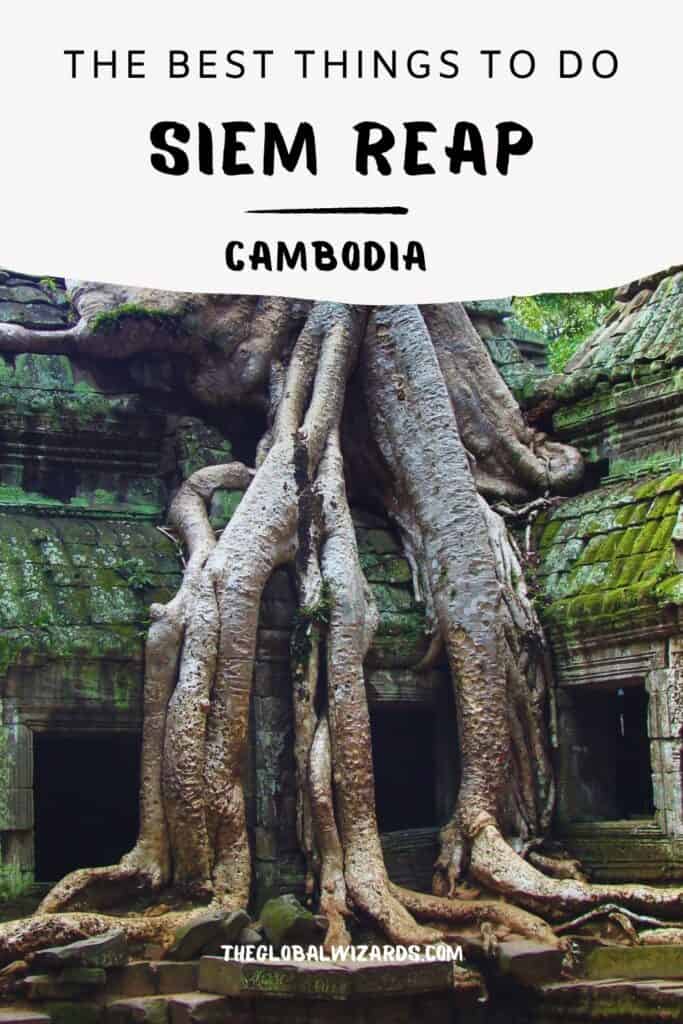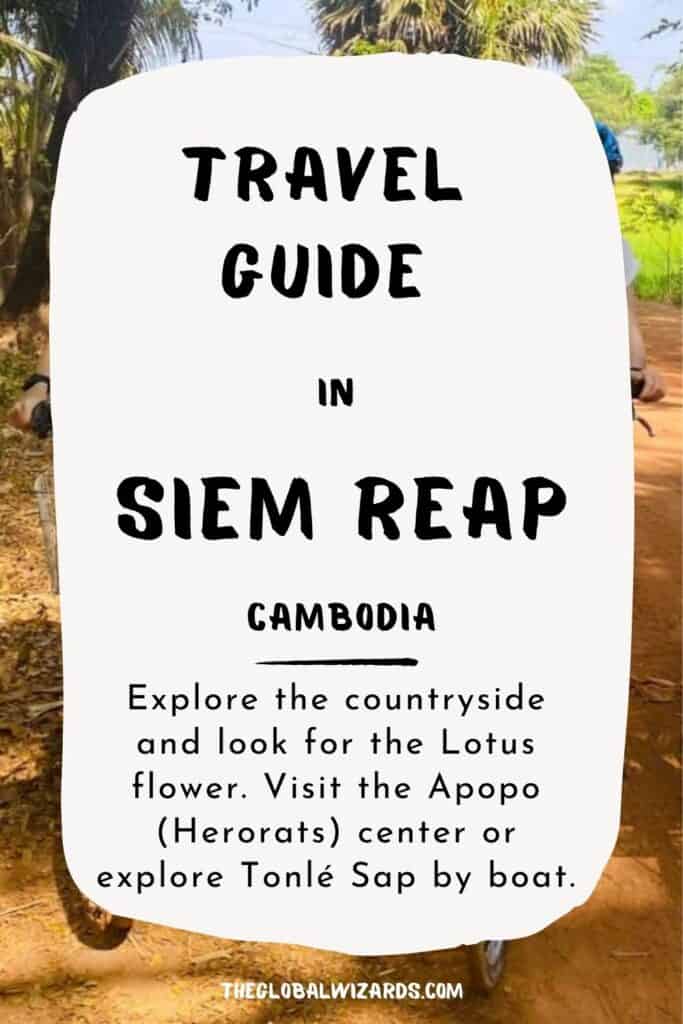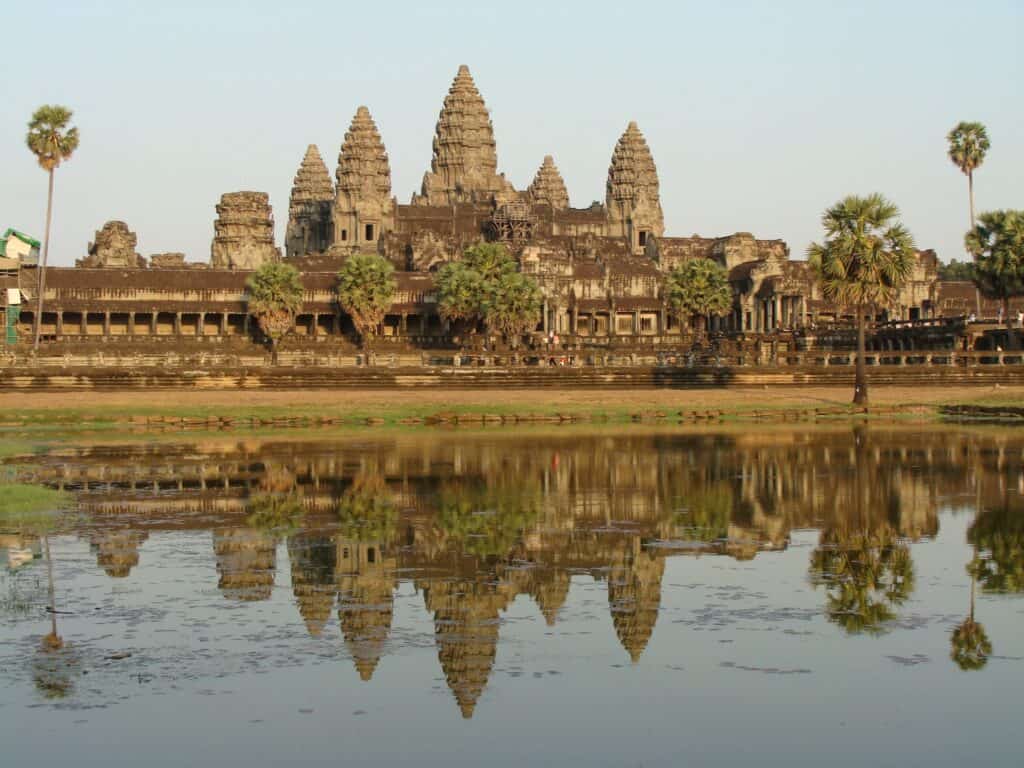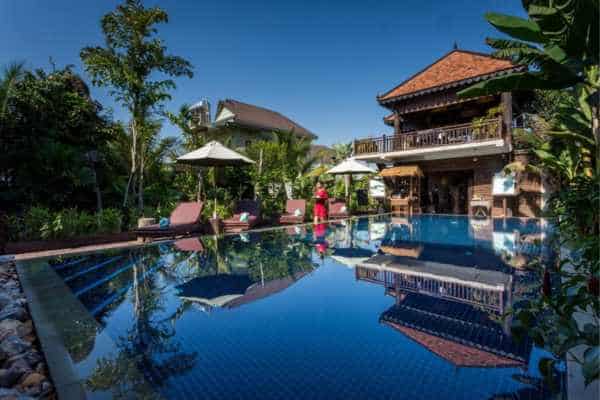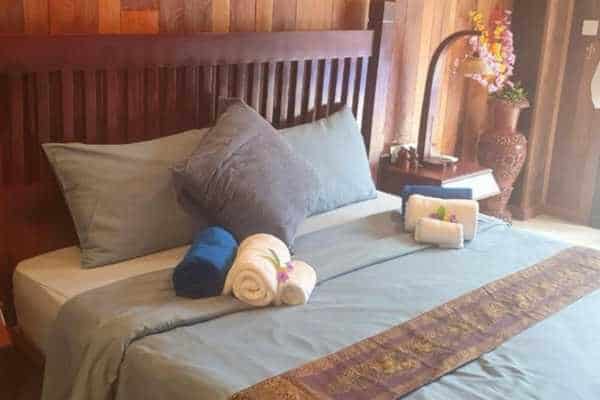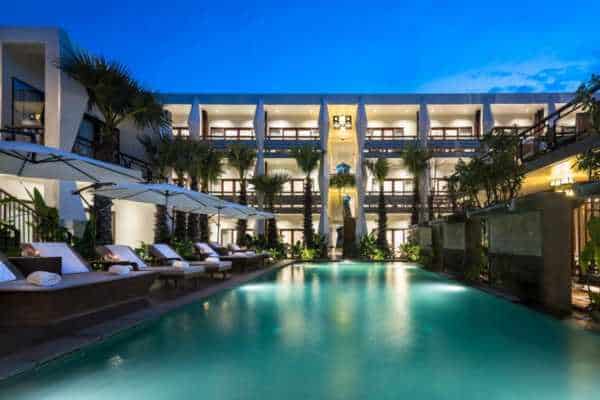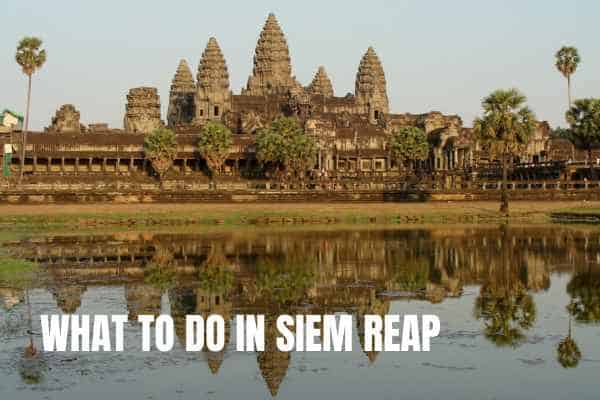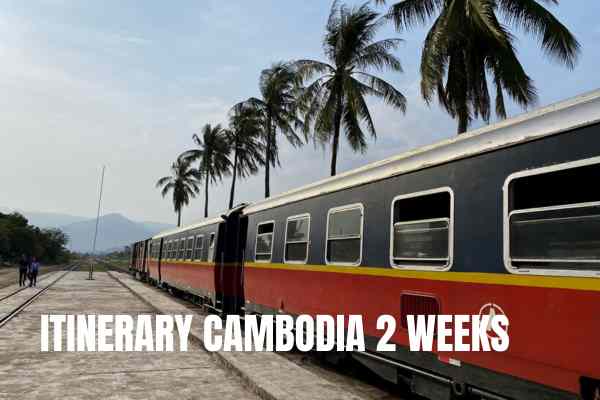Tips for visiting Siem Reap
Siem Reap in Cambodia is best known because you can find the temples of Angkor Wat there. But besides the temples, you can do much more in Siem Reap. We have compiled a list of the best tips for Siem Reap and what to do.
In addition to the temples, you can explore the countryside and look for the Lotus flower. Visit the Apopo (Herorats) center or explore Tonlé Sap by boat.
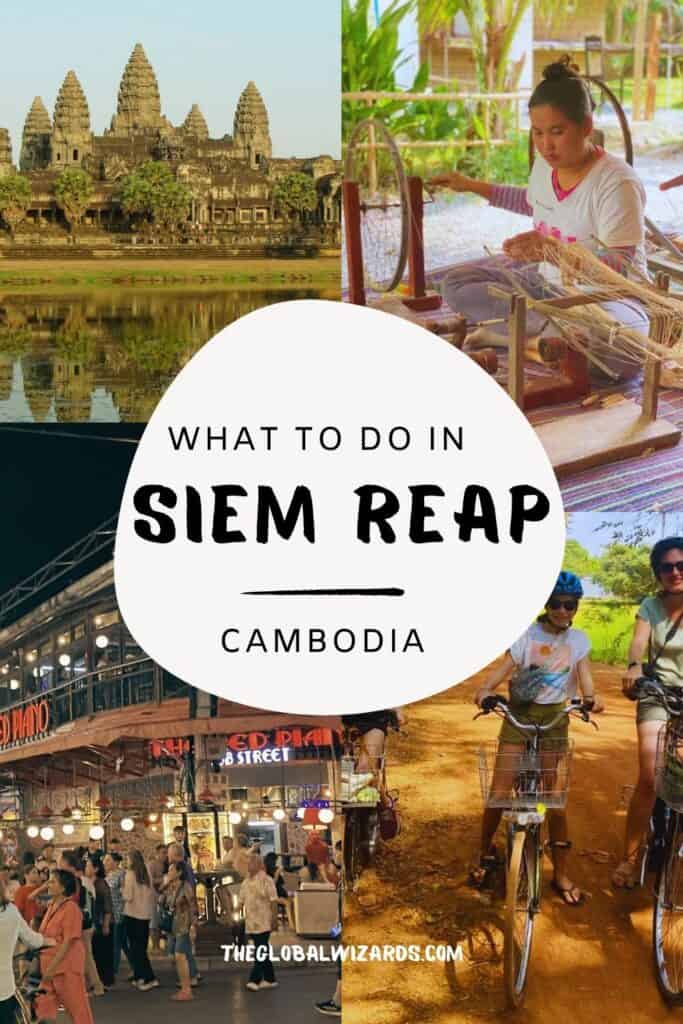
How to get to Siem Reap (from Bangkok)
The easiest way to get to Siem Reap is via Bangkok. That is probably also the cheapest way. You can also fly to Siem Reap, there is a new airport. Compare the cheapest airline tickets on Skyscanner.com or Cheaptickets.com.
From Bangkok, you can take the bus to Siem Reap (8:30 am). We did this trip with Giant Ibis and we were very satisfied with it. Along the way they give you updates about where they are going to stop, they guide you at the border and if necessary they help you get a visa for Cambodia along the way. Just before the border, they will hand you the visa so that you do not have to wait at the border.
Water and a meal are also provided for you. The seats on the bus to Siem Reap are comfortable, but make sure you bring an extra sweater because the air conditioning is on most of the time and it can sometimes be a bit colder. They also have Wifi on board.
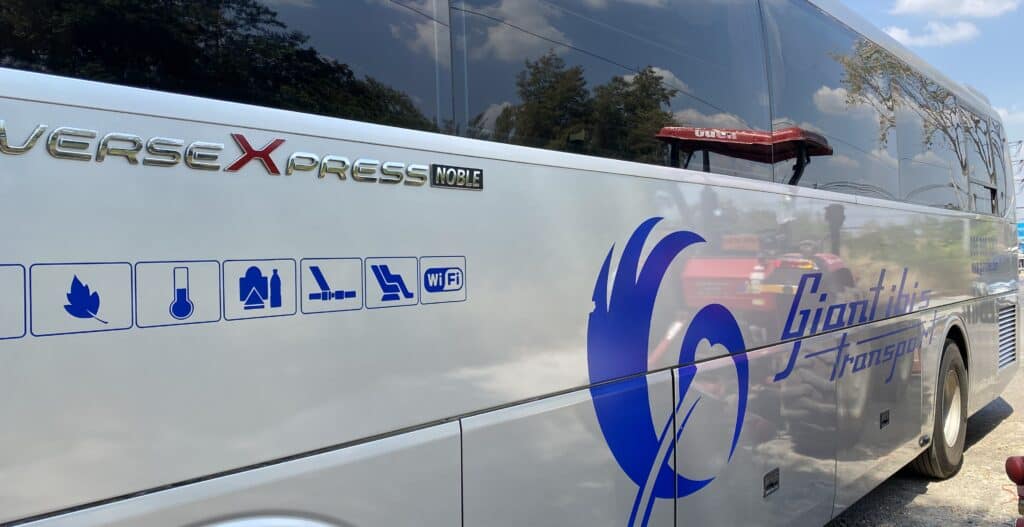
How much time do you need to visit Siem Reap
Count on at least 3 to 5 days to visit everything. You can count on 3 days just to visit the Angkor Wat temples. You can also take another day to explore the countryside by bike (or scooter). And then you still have one day to, for example, Apopo, Tonlé Sap, and a few more museums to visit.
You can also choose to visit the most important temples in Angkor in one day, and then spend another 1 or 2 days in the surroundings of Siem Reap, which are also very beautiful.
Angkor Wat
Angkor Wat is undoubtedly the top attraction of Siem Reap and Cambodia. As many as 2.6 million tourists visit this beautiful temple complex every year.
History of Angkor Wat
Angkor Wat is located north of Siem Reap (6km). This impressive religious monument took no less than 500 years to build. Built during the reign of the Khmer Empire, it was originally a Hindu temple dedicated to Vishnu before later being converted into a Buddhist temple. At its peak, as many as 1 million people lived there. The largest and most famous temple is Angkor Wat.
In the 15th century, it was decided to move to Phnom Phen and establish the capital there. Everything was overgrown by the jungle and only rediscovered in 1900 by a Frenchman. Everything was freed up during the French occupation.
The temples have been open to visitors since 1990 and have become the symbol of Cambodia.
How many days do you need to visit Angkor Wat?
It is generally recommended to allow at least two to three days to explore Angkor Wat and the surrounding temples.
This allows you to take enough time to visit the various temples and admire the beautiful architecture and reliefs.
What is the cost of visiting Angkor Wat?
Do not book your tickets through a travel agent, because you can easily order them online or go to the ticket office in Angkor itself. If you plan to watch the sunrise, it is best to purchase your tickets a day in advance.
TIP: It is best to buy tickets in advance online on the official Angkor Wat website.
The tickets cost $37 for 1 day, $62 for 3 days, and $72 for 7 days.
And then you have the extra costs of renting a bicycle or a tuk-tuk driver. Count on €20 – €25 for a full tour with your tuk-tuk driver. Agree well in advance on which temples you want to visit and also make sure that you recognize your tuk-tuk when you return from the temples.
Also, make sure that you always have enough cash with you so that you can buy food and snacks on the go because it is very hot there all year round. Do not buy anything from children because this only encourages them not to be sent to school.
Do you need a guide for Angkor Wat?
Although it is not mandatory to have a guide when visiting Angkor Wat, it can be very useful. You can find them at the entrance of the temples. They usually have interesting stories about the temples.
Plus, a guide can help you avoid the crowds and discover the most impressive and lesser-known parts of the complex. There are no signs anywhere with explanations. So it is best that you have an explanation booklet with you anyway.
There is a Lonely Planet about Cambodia available in which you can find everything about Angkor Wat. We usually always have our Lonely Planet with us.
What clothes should you wear when visiting Angkor Wat?
When visiting Angkor Wat, it is recommended to wear clothing that is respectful of the religious and cultural nature of the site. This means that you have to cover your shoulders, upper arms, and knees.
Comfortable shoes are also essential as the terrain may be a bit uneven. There are also a lot of stairs that can sometimes be steep. It’s also wise to bring a hat, sunscreen, and water, especially if you plan to explore the temples for an extended period.
How to plan your visit to Angkor Wat?
Here is a possible schedule for a three-day visit to Angkor Wat:
Day 1:
- Arrive early in the morning to watch the sunrise at Angkor Wat.
- Next, explore the temple of Ta Prohm, known for the overgrown trees growing from its ruins. It opens at 7:30 am.
- Then visit the temples of Angkor Thom and Ta Keo, then the Bayon Temple with its impressive faces
- Then explore Angkor Wat, it will be less busy in the meantime, admire the beautiful architecture and take the time to view the reliefs and sculptures.
Day 2:
- Explore the less visited temples such as Banteay Srei, known for its fine reliefs and pink sandstone. This is located some distance from the other temples.
- Visit the Temple of Preah Khan and enjoy the peaceful atmosphere and beautiful architecture.
- Explore other lesser-known temples such as Pre Rup, Ta Som, and Neak Pean.
Day 3:
- Take an excursion to the temples of the Roluos Group, including Preah Ko, Bakong, and Lolei.
- Visit the temple of Banteay Samre, known for its well-preserved reliefs.
- Enjoy a quiet afternoon to relax and process the experiences of the past few days.
Of course, you can still adjust this planning to your own preferences, e.g. Keep Angkor Wat last.
APOPO
Apopo is a Belgian non-profit organization dedicated to training heroRATs, also known as scent-detecting rats, to detect landmines and tuberculosis.
This innovative approach that uses rats’ exceptional sense of smell allows them to identify dangerous situations and therefore save lives.
By using these trained rats, Apopo contributes to detecting and defusing landmines in affected areas, as well as to the early detection of tuberculosis.
Recently you can now visit the Siem Reap APOPO visitor center for a guided tour. You can book a guided tour through email.
During the tour, you will see how the organization works and you will also receive a demonstration from one of the rats. There is also an opportunity to take pictures with the rats. You can also buy T-shirts in their shop.
TIP: Right opposite APOPO there is a cafe in the Siem Reap Botanical Garden.
By bike through the countryside
You will find many Lotus farms in the area around Siem Reap. The Lotus flower is therefore very important in the daily life of Cambodians. If you cycle through the countryside south of Siem Reap you will encounter them everywhere.
The sacred Lotus flower is an aquatic plant whose stems grow in the mud. The flowers open in the morning and can grow up to 25cm. The flowers, seeds, roots, and young leaves are edible.
But the Lotus flower especially has a sacred meaning in Buddhism. It symbolizes divinity and purity. For example, you will see Vishnu, one of the Hindu gods, usually depicted with a flower.
It is possible to do a guided tour of the lotus farm that we visited (after tasting the delicious tea, based on dried Lotus seeds). Clothing is made from the Lotus plant. The threads are ‘pulled’ from the stems and spun into a long rope. Things are also made from the other parts of the Lotus flower.
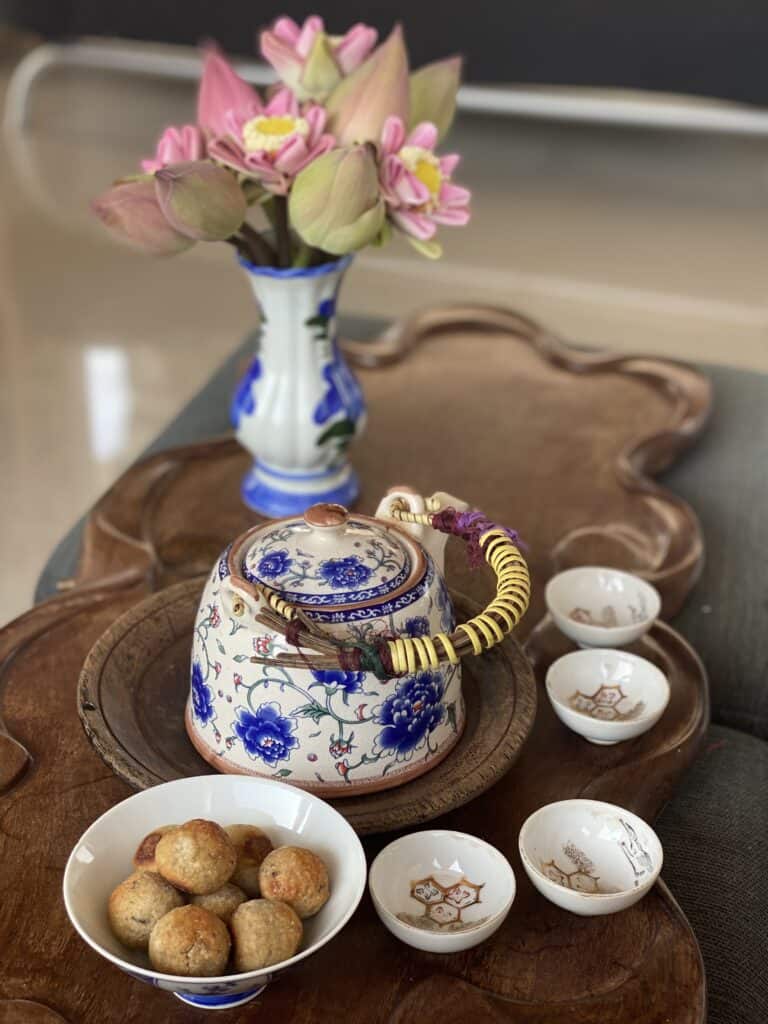
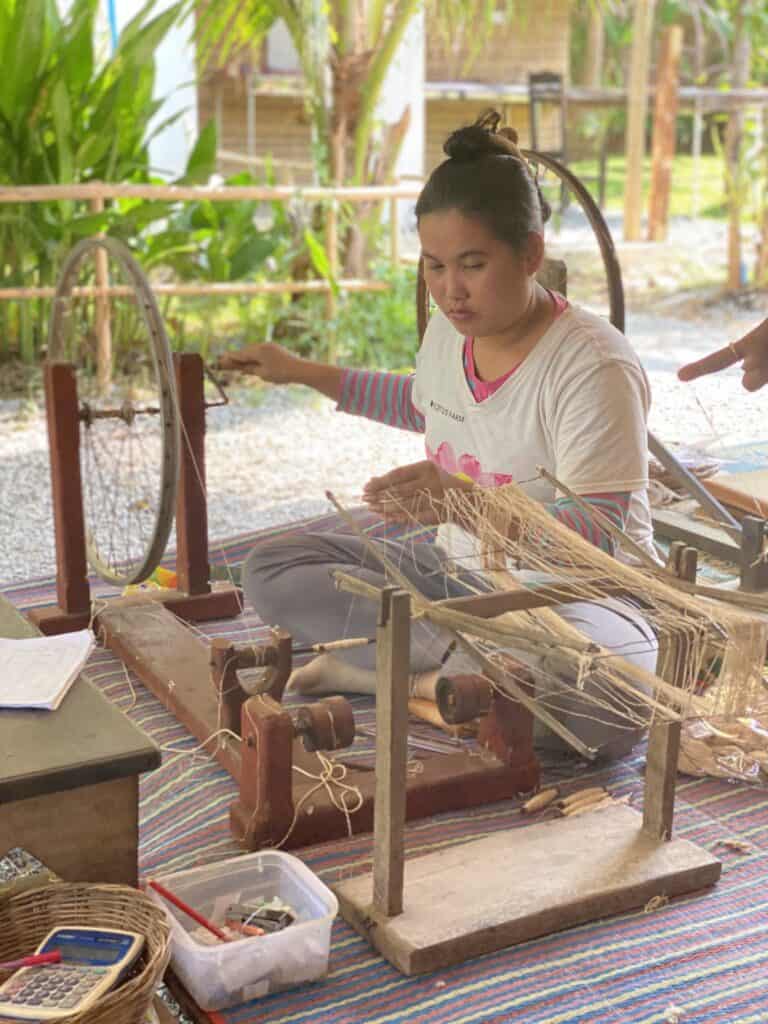
This organization employs no fewer than 150 people in the Siem Reap area.
Try to plan your route through the countryside in advance and avoid the busy main road. To drive south, it is best to first follow the river. We rented electric bicycles from Angkor Cycling Tours. Don’t feel like arranging everything yourself? Then you can also book a guided tour in Siem Reap here.
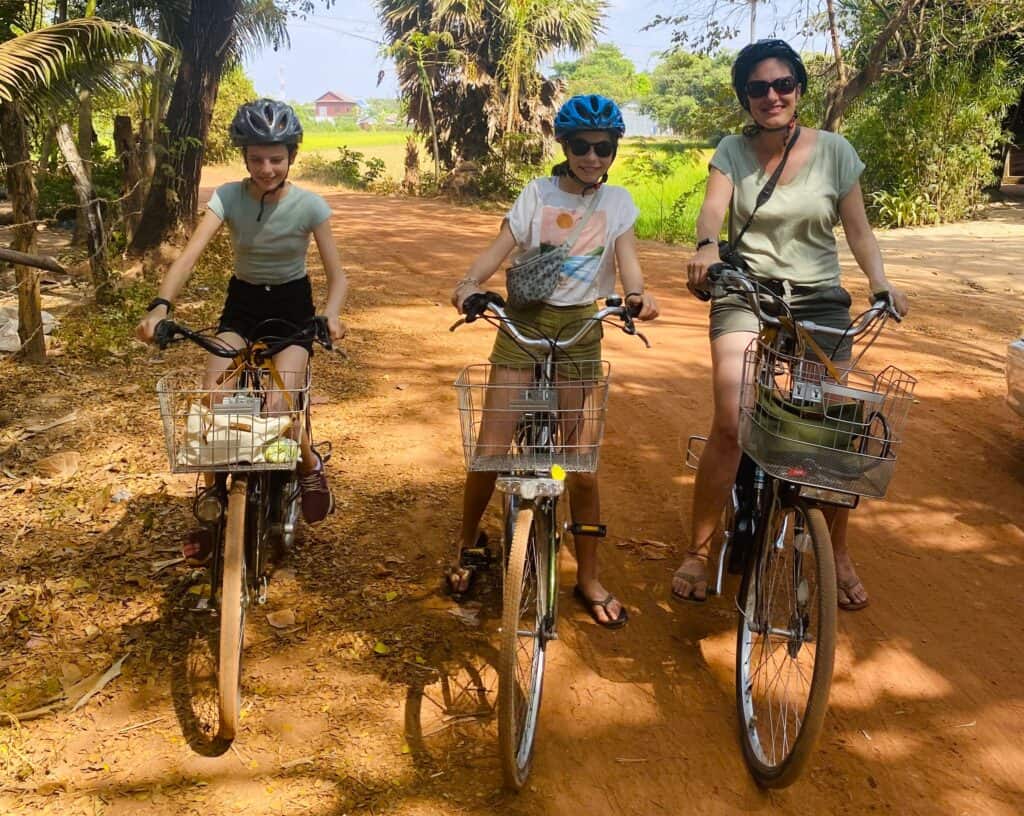
Pub Street in Siem Reap
In the center of Siem Reap you will find Pub Street. Here you will find the vibrant nightlife of Siem Reap, if that is what you are looking for. The decibels are blasting through the loudspeakers, the beer is flowing freely. If you feel like partying this is the place to be. If you prefer to enjoy Khmer cuisine somewhere quiet, we do not recommend this neighborhood.
You can also enjoy delicious food in the side streets. For example, there is a delicious Mexican restaurant, Viva Mexico.
In Pub Street you also have a bar with Belgian roots, namely The Red Piano bar. Ideal if you are homesick for a Belgian beer or Vol au vent.
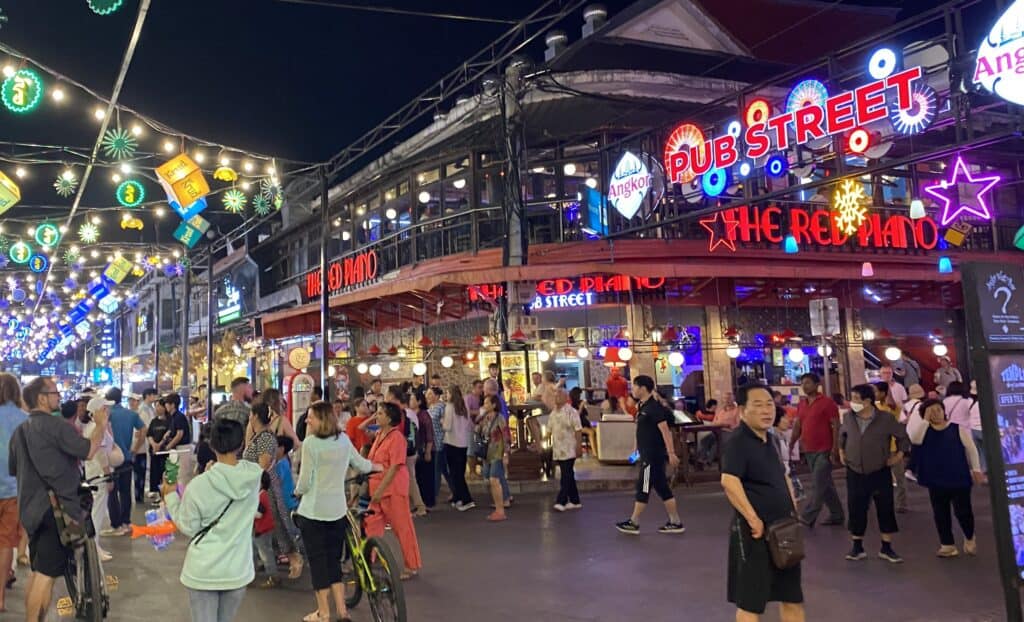
Tonlé Sap and the floating villages
One of the cycling tours in the area of Siem Reap that you can do is to Kampong Phluk and Tonlé Sap. You will see everyday Cambodian life and you can visit some local farms during the tour. You can conclude with a sunset cruise on Tonlé Sap.
You can book this tour here or go out by bike yourself and arrange everything on-site.
Another option is to visit Tonlé Sap by boat. You can book this tour here and it lasts 6 hours.
Phare, the Cambodian Circus
The Phare Circus in Siem Reap, Cambodia, is a striking cultural attraction known for its exciting mix of acrobatics, theatre, music and dance. The performances are performed by talented artists trained at the Phare Ponleu Selpak School, an organization committed to supporting young artists and promoting arts and culture in Cambodia.
The circus performances often tell stories that are deeply rooted in Cambodian history and culture. By attending the Phare Circus you can not only enjoy spectacular performances, but you also contribute to supporting the artistic development and well-being of the local community.
Spending the night in Siem Reap
During our trip to Siem Reap in Cambodia, we stayed at Java Wooden Villas. We had two rooms next to each other. The rooms are spacious and offer a view of the pool and the sunset. Breakfast is also provided, with a choice of different dishes.
Next to Java Wooden Villas, there are also Three Little Birds (pool and breakfast) and Jaya House River Park (luxury resort).
There is plenty of choice in Siem Reap. Check this page for other hotels in Siem Reap. It’s nice to have a swimming pool when you come back from the temples and want to cool off.
Save this article on Pinterest
